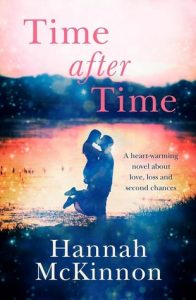Dialogue: Say, Say, Say What You Want, Although …
 Most writers would agree they love interacting with other writers. After all, who understands the trials, tribulations, crippling self-doubt and (at times elusive) euphoria better than a fellow author?
Most writers would agree they love interacting with other writers. After all, who understands the trials, tribulations, crippling self-doubt and (at times elusive) euphoria better than a fellow author?
But ask us scribblers how we feel about writing dialogue and it seems the group is split clean down the middle. Half of us love to write dialogue, the other hates, or even fears it. Personally, I’m in the group that enjoys it. When I’m at the Shitty First Draft stage of a short story or novel, I’ll write mainly dialogue and leave actions and descriptions until later. It’s almost as if the characters tell me their story before I’m able to flesh it out further.
Just because I enjoy writing dialogue doesn’t mean it’s easy, and, like most elements of creative writing, there are rules for creating dialogue too. While some authors follow them instinctively, most of us need to learn at least a few. Here are some to consider:
- Use dialogue as a tool – dialogue isn’t just about making conversation, it needs to move the story along. Something must be explored, resolved, argued about, or all of the above.
- Make sure the dialogue changes something – for example a shift in a relationship or situation, questions that are raised, or answers that are uncovered. If the dialogue doesn’t do something, it can probably be cut.
- Dialogue should advance the plot – use it to reveal a character’s emotions, clarify or create relationships and/or situations, explore or deepen conflict and confrontation (maybe even deliver a deciding blow in an argument), comment on a character’s surroundings, or cue a transition to a new scene or chapter.
- Ensure your dialogue sounds natural. This is probably one of the most important aspects, so it’s worth going into more detail:
 Practically everyone uses contractions when they’re speaking, such as “I’m, they’re, isn’t” instead of “I am, they are, is not”. Without these common contractions, dialogue runs the risk of sounding stilted and old fashioned. The characters should sound the way real people talk. That may also include some common grammatical errors, especially if they’re in keeping with your character.
Practically everyone uses contractions when they’re speaking, such as “I’m, they’re, isn’t” instead of “I am, they are, is not”. Without these common contractions, dialogue runs the risk of sounding stilted and old fashioned. The characters should sound the way real people talk. That may also include some common grammatical errors, especially if they’re in keeping with your character.
People constantly interrupt and talk over each. Most of us don’t wait patiently until the other person has finished speaking – we add little comments and cut people off. It should be the same in dialogue. Doing so makes it more realistic, and fun to read. Similarly, characters shouldn’t make long speeches (unless the situation calls for it) before being interrupted by someone else.
There’s room for colloquial speech and (deep breath) even some clichés. I know the latter are considered an authorial sin, but that’s how people speak. Less is probably still more, though.
Dialogue needs to be sharp and colourful, particularly for a sarcastic character. This will truly bring the manuscript, and characters, to life.
- Keep dialogue tags simple. Tags such as “she hissed”, “he growled”, “she screeched”, “he squawked” should be substituted for “said”. Many authors worry that “said” is bland and boring when in fact the word practically disappears into the background, letting the reader focus on what the character is saying. Anything other than “said” has a tendency to pull the reader out of the story, something authors want to avoid.
- Dialogue tags aren’t always necessary. The “he said” / “she said” tags should be kept to a minimum if there are only two people speaking, and used as a reminder every fourth or fifth line. However, if you have more than two people speaking, you’ll have to give your reader more indication about who’s talking. Basically if it’s clear who’s speaking, the dialogue doesn’t need a tag.
- Dialogue doesn’t have to be clear. To, ahem, clarify, the characters don’t have to say exactly what they’re thinking, feeling or mean. In real life we often use sub-text, and it makes your characters more believable, realistic and entertaining if they do the same.
- Proper punctuation is key. Here’s a detailed post about how to punctuate dialogue correctly, which is vital when submitting a manuscript to agents and publishers.
If writing it still gives you the heebie-jeebies, make sure you ask your beta-readers for specific feedback on your dialogue. Their input will help you make it pop even more. I’d also recommend you pick up your favourite authors’ books and look at how they handle dialogue.
One of my favourite writers is David Nicholls. His dialogue is hilarious, realistic and wildly entertaining. He also writes for TV, so his immaculate prose is no accident. That’s another way to study dialogue – get your hands on a few scripts and see how they’ve been crafted – after all, they predominantly feature people talking.
Thanks for reading!
Hannah
—
Hannah was born in the UK and grew up in Switzerland. Unsurprisingly she loves chocolate, mountains and cheese, and books, of course.
When she moved to Canada with her husband and three sons in 2010 she went through an (early) mid-life crisis. Maybe it was the failed attempt at a start-up company or the fact she suddenly found herself in her forties, but one morning she decided to follow her oldest passion; she started writing and never wanted to look back. Hannah writes for adults and children, and has a soft spot for quirky short stories, many of which have been published online. Time After Time is her first novel. She lives in Oakville, Ontario.
To find out more please visit www.hannahmckinnonwriter.com or follow her on Twitter @mrselectrilight
Category: Contemporary Women Writers, How To and Tips























